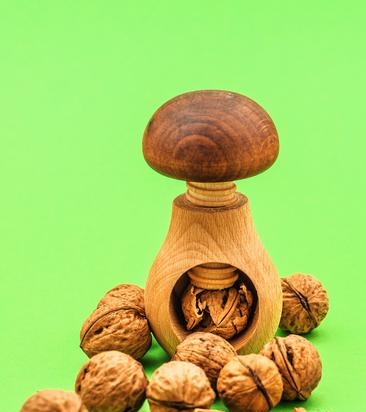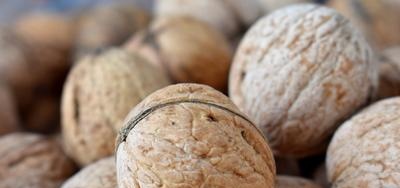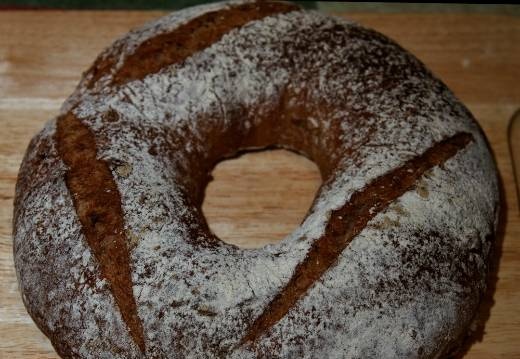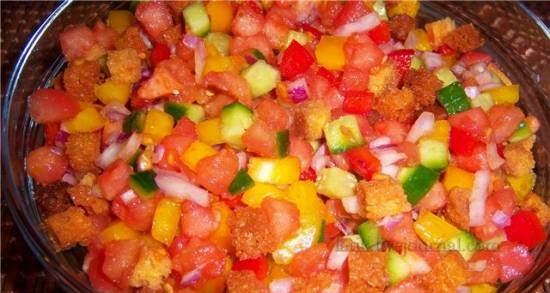|
 One of the characteristic biological features of the walnut is dichogamy, that is, the non-simultaneous flowering of male and female flowers on the same tree. One of the characteristic biological features of the walnut is dichogamy, that is, the non-simultaneous flowering of male and female flowers on the same tree.
In this regard, the self-pollination of the nut is insufficiently developed, but it cannot be completely attributed to self-sterile (self-sterile) plants.
Dichogamy is the reason the walnut is essentially a cross-pollinated breed. And this, in turn, is the reason for its polymorphism (variety of forms).
In connection with such biological characteristics, the offspring obtained from mother plants always deviates from the latter to a greater or lesser extent. Most seedlings grown from fruits of the mother tree with certain traits may not have them.
The experiment of GI Kancha-Veli, carried out in 1964, is quite indicative. To test the inheritance of the characteristics of the maternal form, seeds of the walnut juglans regia f were sown. laciniata Loud with ash-like leaves. Of the 950 grown seedlings, only four had the same.
On collective farms, state farms and forestry enterprises, walnut orchards are laid with non-varietal planting material. In advanced farms, planting takes into account the value of the original walnut forms. But even here there is no guarantee of inheritance of maternal traits.
 The inheritance of maternal traits by the offspring guarantees vegetative reproduction (grafting, budding, layering, rooting of the shoots, etc.). However, this method of breeding a valuable breed has not yet received proper distribution. The inheritance of maternal traits by the offspring guarantees vegetative reproduction (grafting, budding, layering, rooting of the shoots, etc.). However, this method of breeding a valuable breed has not yet received proper distribution.
The dichogamy of the walnut directly affects the fruit yield.
According to our research, the number of formed ovaries has the following dependence on the difference in flowering time of male and female flowers: on trees where it coincides for more than five days, ovaries are formed 4-7 times more than on those where this coincidence is limited to one or two days. Since this breed is wind-pollinated, more ovaries are formed on sunny days with a weak wind.
Usually in plantations there are more trees in which male flowers bloom earlier than female ones, but those in which female flowers bloom earlier are more productive, since they have the possibility of a longer fertilization.
In young forest stands, during thinning, it is necessary to regulate the number and ratio of those and other trees.
In older gardens, the negative effect of dichogamy on yield can be reduced by grafting cuttings of fruitful forms with the opposite flowering pattern into the crown of trees.
Each farm has the opportunity to select trees with valuable properties for their further vegetative propagation.
Considering the biology of the walnut, the nature of flowering and fruiting, we offer:
1) plant gardens only with grafted seedlings of good varieties and shapes;
2) propagate the nut by seed only in forest plantations.
These measures will contribute to the cultivation of the best varieties and forms of walnuts in orchards and plantations, and an increase in yield, which will make it possible to increase the economic efficiency of this crop.
Yu. F. Grishin
|
 One of the characteristic biological features of the walnut is dichogamy, that is, the non-simultaneous flowering of male and female flowers on the same tree.
One of the characteristic biological features of the walnut is dichogamy, that is, the non-simultaneous flowering of male and female flowers on the same tree. The inheritance of maternal traits by the offspring guarantees vegetative reproduction (grafting, budding, layering, rooting of the shoots, etc.). However, this method of breeding a valuable breed has not yet received proper distribution.
The inheritance of maternal traits by the offspring guarantees vegetative reproduction (grafting, budding, layering, rooting of the shoots, etc.). However, this method of breeding a valuable breed has not yet received proper distribution.









